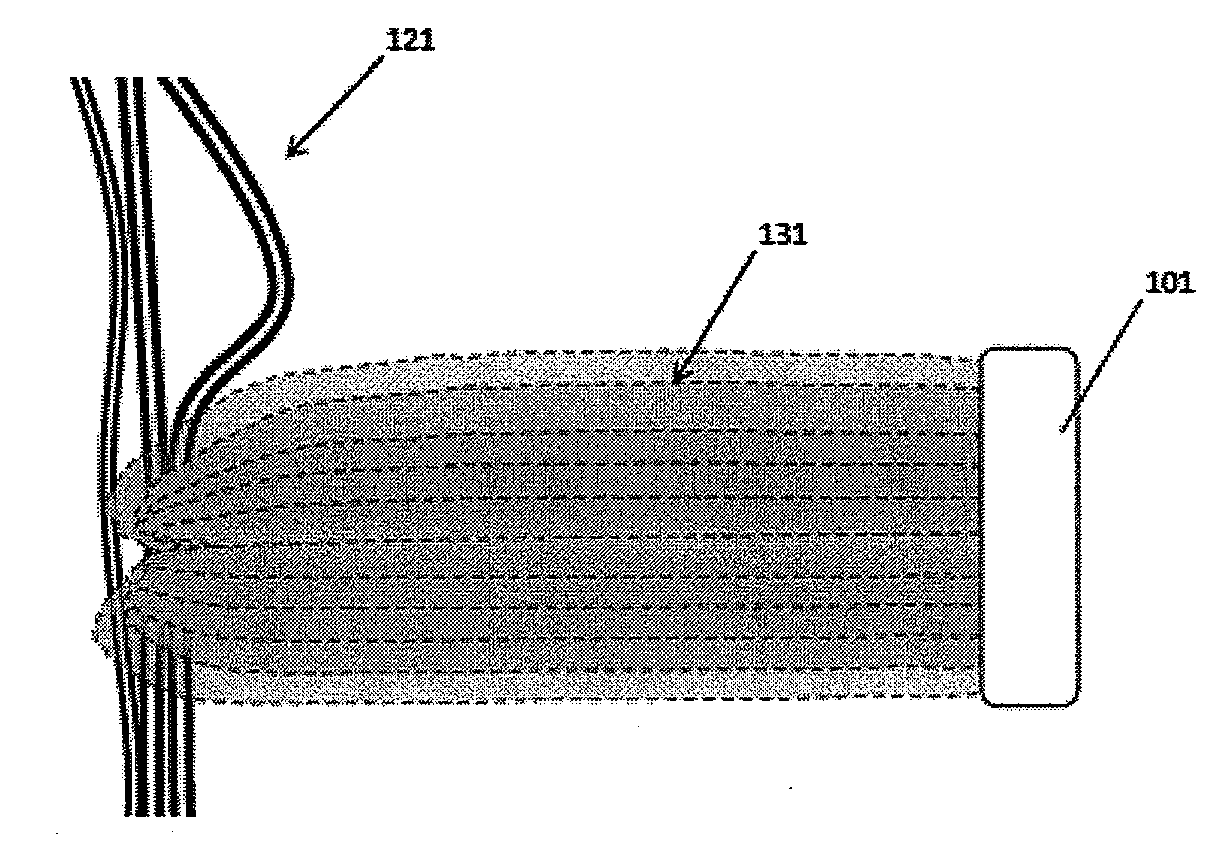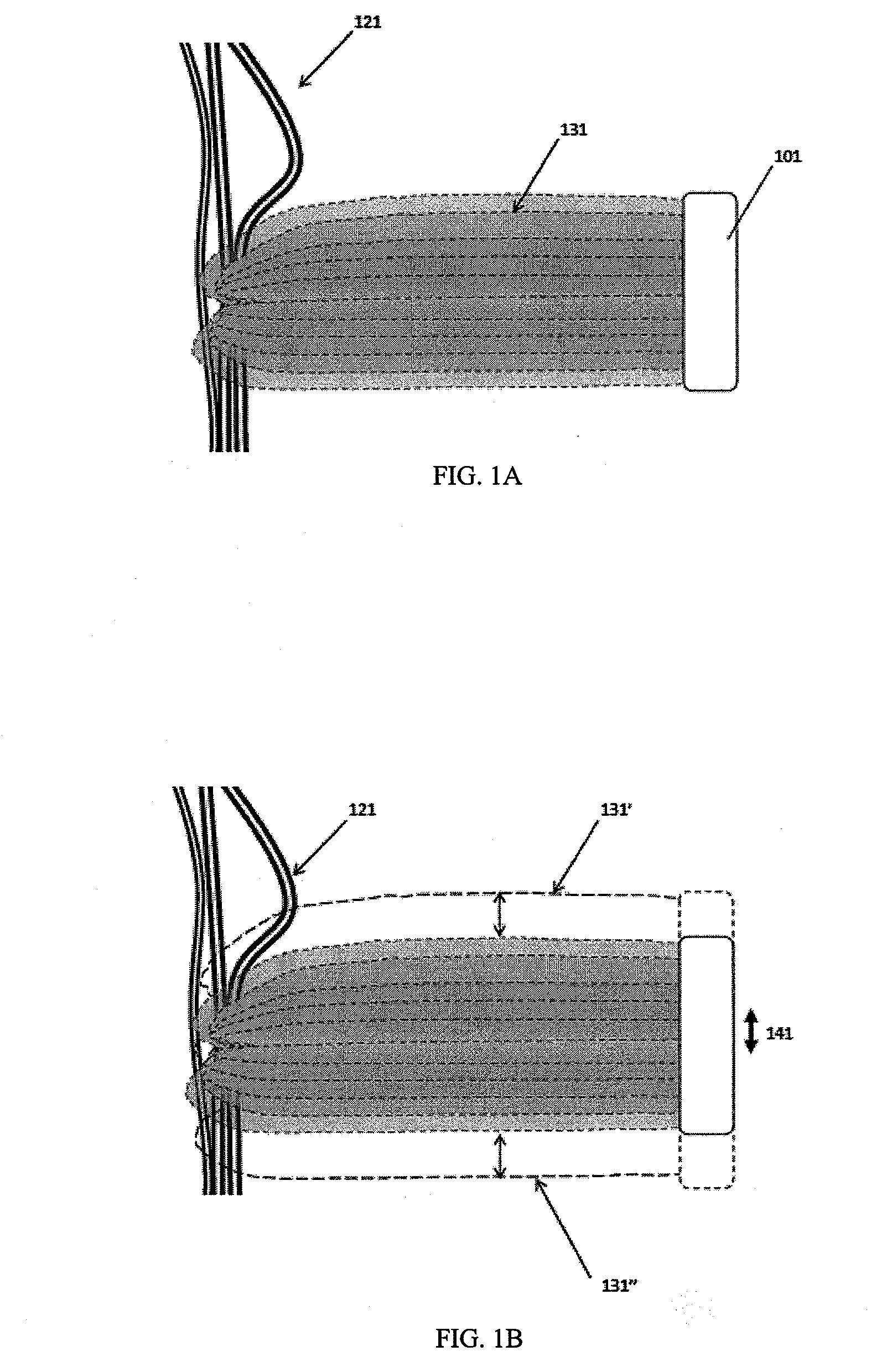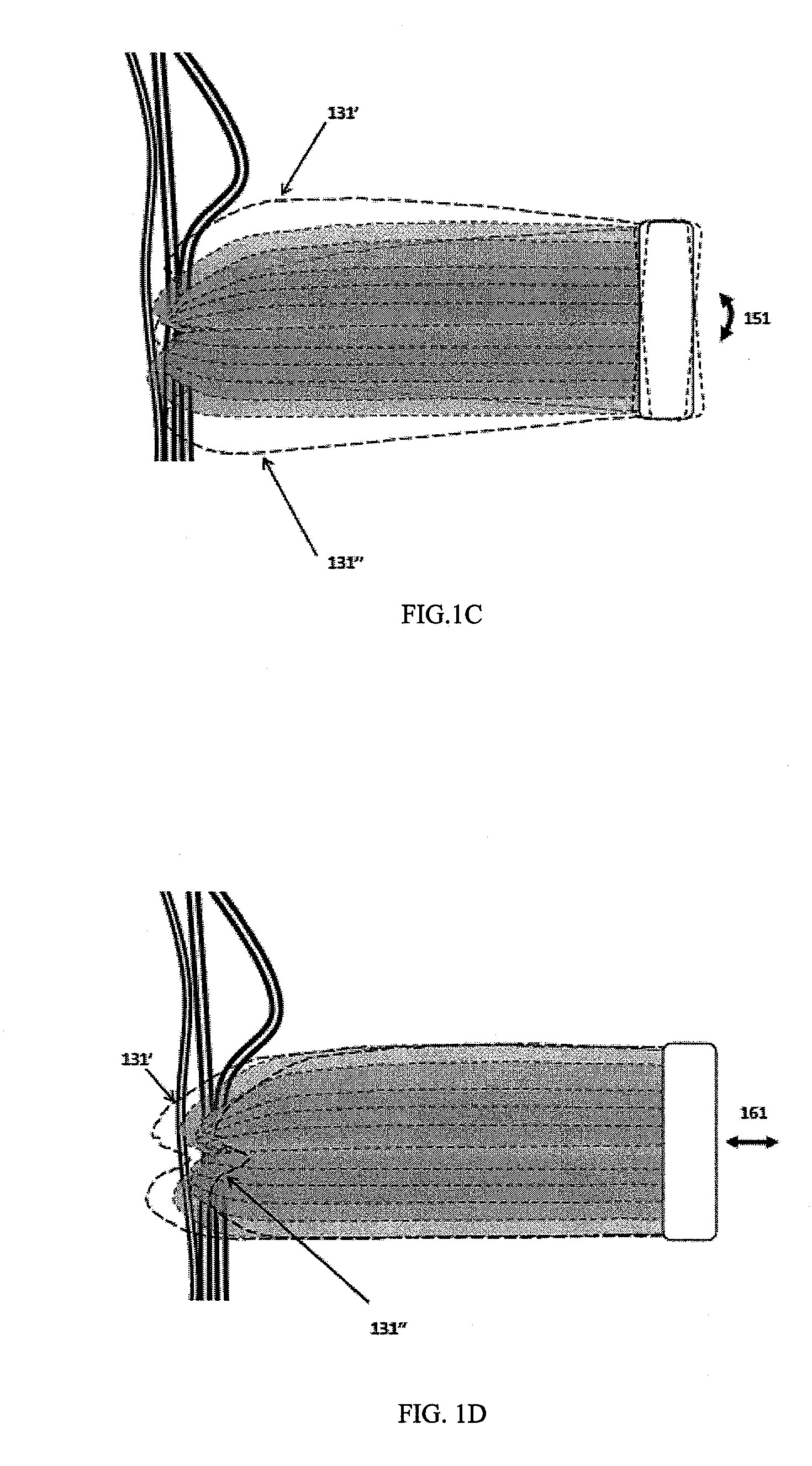Transcranial magnetic stimulation by enhanced magnetic field perturbations
a technology of enhanced magnetic field and transcranial magnetic stimulation, which is applied in the field of transcranial magnetic stimulation, can solve the problems of difficult prediction or model, complex current path, and difficulty in estimating the efficiency of stimulation for any given position and power of tms electromagnet, and achieve enhanced changing magnetic field (db/dt), enhanced local stimulation, and enhanced the effect of magnetic field
- Summary
- Abstract
- Description
- Claims
- Application Information
AI Technical Summary
Benefits of technology
Problems solved by technology
Method used
Image
Examples
Embodiment Construction
[0039]The devices, systems and methods described herein are intended to enhance the magnetic perturbation of a neuronal (e.g., brain) target during Transcranial Magnetic Stimulation (TMS), thereby enhancing the induced current in the target. In general, these devices, systems and methods enhance the magnetic perturbation (e.g., dB / dt) of the target by mechanically moving a TMS electromagnet (e.g., coil) at a frequency of greater than 1 kHz.
[0040]The principles of the present invention do not depend on the coil shape, type or higher-order configuration within an array of electromagnets, as long as electromagnetic field generated has a shaped component that is directed towards the target. Accordingly, the figures and illustrations described below depict generic electromagnet shapes, though it is to be understood that any appropriate configuration may be used. One example of a TMS electromagnet configuration is a figure-eight, double coil, including those sold by Medtronic (e.g., MC-B7...
PUM
 Login to View More
Login to View More Abstract
Description
Claims
Application Information
 Login to View More
Login to View More - R&D
- Intellectual Property
- Life Sciences
- Materials
- Tech Scout
- Unparalleled Data Quality
- Higher Quality Content
- 60% Fewer Hallucinations
Browse by: Latest US Patents, China's latest patents, Technical Efficacy Thesaurus, Application Domain, Technology Topic, Popular Technical Reports.
© 2025 PatSnap. All rights reserved.Legal|Privacy policy|Modern Slavery Act Transparency Statement|Sitemap|About US| Contact US: help@patsnap.com



